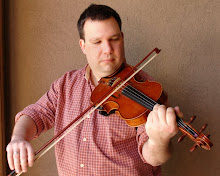
Completing this instrument is bittersweet, due to the death of my friend and violin making mentor, Curt Johnson, to cancer in September of 2009. Curt worked at the highly reputed Amati Violin Shop in Houston, TX. He had long wished to study violin making in Cremona and he made a visit there to interview with Maestro Bissolotti. However, he was not able to attend, so violin making was suspended for teaching mathematics, classical guitar, and rock climbing. I met him in 2004, during the remission of his first fight with cancer and just as I was beginning to make violins as a respite from my architecture career. His advice then was invaluable and gave me a good sense of what was required of me to do good work.
One day Curt came to my house with armfuls of wood, tools and books. He told me that since he would never use them, I could have them. What an amazing gift! In the batch of wood was some beautiful old Bosnian maple he had bought in 1991 during a trip to Germany. He sold most of his wood to Howard Core and kept a few exceptional billets for himself. I set the wood aside for a future special occasion, much like a collector of fine wine.
In 2008, Curt's cancer had returned to his abdomen and he began a new regimen of chemotherapy. I was working on my third violin at the time, and I would visit him often to talk about music and violins. One day in March of 2009, he called me. "Russell, I'm f**ked. I'm going into hospice and I have 4-6 months to live." At that time, I was half-way through my fiddle. I set it aside and pulled out the wood he gave me. I resolved to do my best to make sure he saw that wood become a violin before he was gone. I was able to finish the violin, unvarnished, a couple of weeks before he died. I visited him and played it for him at his bedside with his friends and family. It was the toughest concert I ever gave. Each time I pick up a tool he gave to me that day, I think of him.
The sound is excellent; sweet and complex in the upper registers and big and rich in the lower strings, almost viola-like. The timbre is even across the registers, i.e. the violin has the same voice quality on the g string as it does the e string. There are still a few adjustments to be made, the final step in the violin making process. I'd like to get a quicker attack on the notes when playing fast and softly. As it stands now, I feel a little too much bow pressure is needed to get the string ringing. This is fine for legato playing, but the articulation needed for Irish fiddle requires the string to be "plucked" by the bow on nearly every note. I will start by systematically adjusting the position of the the soundpost. The selection of strings that best suits the violin is considered, too. Strings are not "one size fits all." Often, the tone and response on an old violin can be improved just by using a different make or gauge of string.
Russell Hopper Violin Maker




